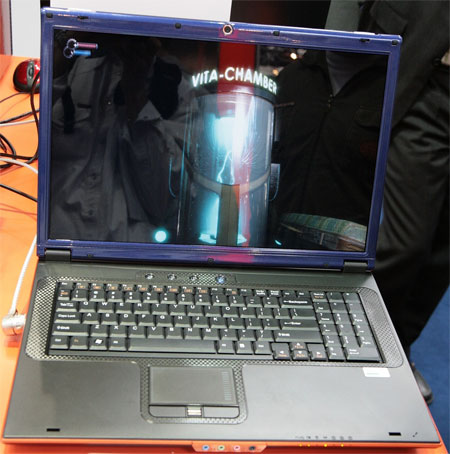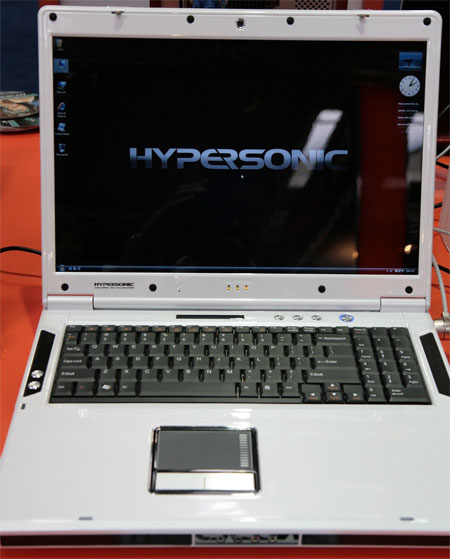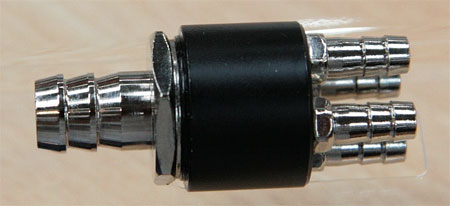CeBIT 2008: OCZ Jumps Into Laptop Market
The manufacturer of high end memory modules continues its diversification process, taking advantage of its reputation as a manufacturer of elitist products made for gamers. We have no news from its compressor, but more interesting for a majority of people, OCZ jumps in the laptop market.
Already available in the United States, they should arrive in Europe in May. We have three desktop replacement dedicated to gamers and clearly positioning themselves next to Alienware. The first model at $3000 {€2000}, the Aviator SR7 is a 17" 1920x1200 based on a Core 2 Duo T9500 (2,6 GHz), that has 4 GB of RAM, a 160 GB 7200 rpm hard drive and of course a GeForce 8800M GTX 512 MB. The finish was surprisingly good with fringe in carbon fiber and a keyboard that has convincing ergonomics.
For $5300 (€3500m) the EA7-U1 has some interesting particularities. It's a simple PC sold with cards in SLI, but that doesn't have the slightest NVIDIA chipset, since we find a P965 (this isn't new though since Asus already offers a laptop based on a Core 2 Extreme X9000, for instance). The graphic cards are "only" two 8700 GT 512 MB. Among other things we also found 4 GB of RAM, two 250 GB 5400 rpm (that's lame considering the price) hard drives in RAID 0 and a Q6600.
The highest model, sold $6000(€4000,) only has a X6800 and will thus be inferior in heavily multithreaded applications. They are increasingly common even if games aren't there yet. It's true particularity is the presence of a 32 GB SSD on top of a RAID 0 or 2 hard disks.
OCZ doesn't limit itself to high end desktop replacements since it also offers an ultra-portable 12" laptop announced at $1225(€800) that could be the most interesting model of all. We find a Core 2 Duo T7700 (2.4 GHz), 2 GB of DDR2 667 MHz, a 100 GB hard drive turning at no less than 7200 rpm and an integrated graphics (X3100 / G965)
Finally doesn't forget where it came from and launches a new series of watercooled memory modules, with not one but two waterblocks (an adapter is given to distribute the water. This is quite ridiculous since today, modules generate less heat thanks to DDR3 and adding a simple fan on the heat sink brings gains that are still hard to quantify. Without mentioning the fact that the manufacturer could have done the same thing just by using one water entrance and one exit , but it would have been less visible, meaning impressive...
We struck a chord when we talked about Corsair's DDR3 running at 2133 MHz, the fastest at the moment. OCZ immediately respond by saying it was nothing more than a simple overclocking (like if ultra high end modules were something else), and that its own module ran at 2100 MHz and could go much higher once overclocked. We didn't see any demonstration though...
Get Tom's Hardware's best news and in-depth reviews, straight to your inbox.





